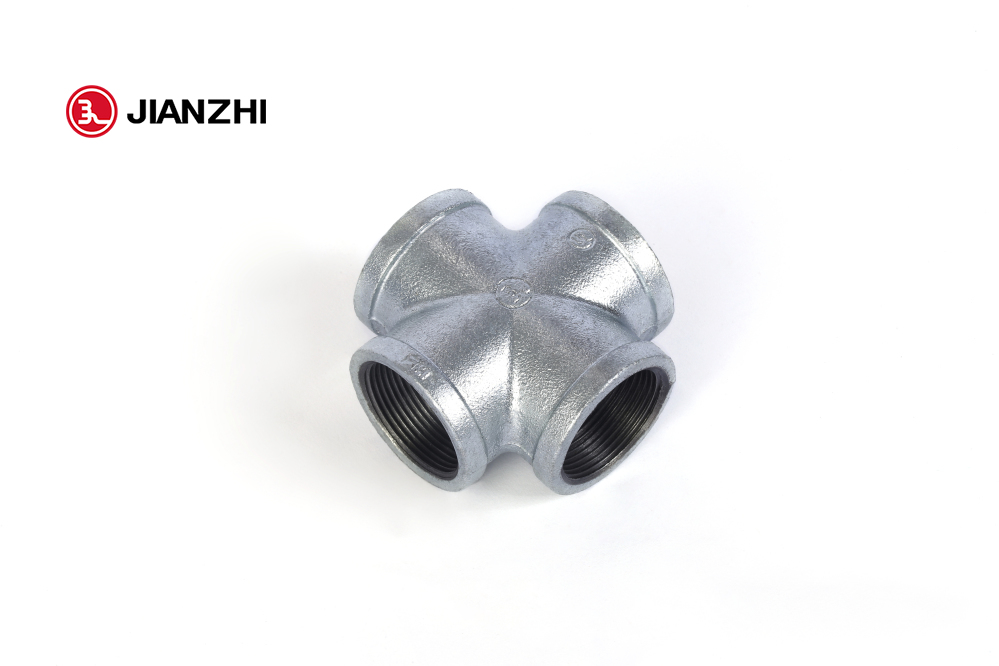Galvanized pipe fittings can also play a role in the construction of agricultural hydroponic systems, though they come with some considerations due to the material's properties.
Structural Support: Galvanized pipe fittings can be used to create the framework for hydroponic systems, providing sturdy support for grow beds, piping, and reservoirs.
Distribution Network: They facilitate the creation of a distribution network for nutrient solutions, allowing for the passage of water and nutrient mixes from a central reservoir to various growing beds or trays.
Durability and Corrosion Resistance: Galvanized fittings offer good durability and resistance to corrosion, which is beneficial in environments where there's constant exposure to moisture and nutrient solutions.
Customization and Flexibility: Like black pipe fittings, galvanized fittings allow for the customization and adaptation of hydroponic systems to suit specific plant types, space constraints, or nutrient requirements.
Integration with Irrigation Systems: They enable the integration of irrigation systems, connecting pipes or hoses that deliver nutrient solutions directly to the plant roots.
Support Structures: Galvanized fittings help in building stable support structures for trays or beds, ensuring the stability of the plants in vertical or inclined hydroponic setups.
Aeration Systems: They can be incorporated into air distribution systems for aerating nutrient solutions, maintaining optimal oxygen levels for plant roots.
However, there are considerations with galvanized fittings:
Zinc Concerns: Galvanized fittings are coated with zinc, which may interact with nutrient solutions, potentially causing issues if zinc leaches into the water. Some plants are sensitive to zinc levels, impacting growth.
Longevity: While galvanized fittings are durable, the zinc coating might degrade over time, especially in the presence of acidic solutions, potentially reducing the lifespan of the fittings.
Maintenance: Over time, corrosion or degradation of the zinc coating might require maintenance or replacement of the fittings to prevent issues with water quality or structural integrity.
When using galvanized fittings in hydroponic systems, it's essential to consider these factors and, if necessary, take precautions or use alternative materials to avoid any adverse effects on plant health or system longevity. Regular monitoring and maintenance can also help mitigate potential issues associated with the use of galvanized fittings.
Innovative applications for galvanized pipe fittings in modern architectural designs are continuously evolving. Some emerging trends include:
Industrial Aesthetic Integration: Galvanized pipe fittings are increasingly being used as visible components in architectural designs to achieve an industrial or contemporary aesthetic. They are employed in exposed piping for stairs, railings, and interior or exterior design elements.
Modular Construction: The modularity and versatility of galvanized pipe fittings make them attractive for modular construction methods. galvanized pipe fittings Architects and designers are using these fittings to create customizable and adaptable structural frameworks for temporary or permanent installations.
Sustainable Design: Galvanized pipe fittings are sought after for their durability and corrosion resistance. In sustainable architecture, they're being utilized for rainwater harvesting systems, solar panel supports, or green building initiatives due to their ability to withstand outdoor elements.
Interior Design Elements: Designers are incorporating galvanized fittings into interior spaces, creating unique furniture, shelving units, lighting fixtures, and room dividers. They contribute to a rugged yet stylish industrial aesthetic.
Art Installations: Artists and architects are exploring the creative potential of galvanized pipe fittings in large-scale art installations and sculptures, utilizing their structural integrity to create visually appealing and functional pieces.
Urban Furniture and Fixtures: Galvanized pipe fittings are used to construct urban furniture and fixtures like benches, bike racks, and streetlight poles, offering a blend of functionality and industrial design.
Facade and Cladding Systems: In contemporary architecture, galvanized fittings are used as part of facade and cladding systems, adding texture and visual interest to building exteriors while maintaining durability in various weather conditions.
Interactive Installations: Architects are employing galvanized fittings in interactive installations or kinetic sculptures, allowing for movement and adaptability within architectural spaces.
Adaptive and Temporary Structures: Galvanized pipe fittings are being used in the creation of adaptive structures for events, exhibitions, or temporary installations due to their ease of assembly, disassembly, and reconfiguration.
Lighting Design: Designers are integrating galvanized fittings into lighting installations, creating pendant lights, chandeliers, or industrial-themed lighting fixtures for both residential and commercial spaces.
The flexibility, durability, and industrial aesthetic of galvanized pipe fittings continue to inspire architects, designers, and artists to explore new and creative applications, leading to innovative uses in modern architectural designs.

Previous: Silicone One-Way Valve, No-Drip Valve, and Silicone Duckbill Valves: Reliable Flow Control Solutions
Copyright:@2020-2021
Comments Please sign in or sign up to post.
0
0 of 500 characters used